The history of the ancient Russian city of Uglich goes back to the distant 10th century. In the XIII-XVI centuries it was the center of the principality of the same name. One of the most famous and tragic events in his history was the murder of Tsarevich Dmitry, committed under strange, not fully disclosed circumstances.
The picturesque ancient churches of Uglich, monasteries and merchant estates create here a special atmosphere of past centuries - it is not for nothing that the town is one of the most popular on the Golden Ring route and a stopover for all cruise ships traveling along the Volga. Another indisputable advantage of Uglich is a large number of small museums with unique collections that have appeared in the city thanks to its enthusiastic residents.
What to see and where to go in Uglich?
The most interesting and beautiful places for walking. Photos and a short description.
- Uglich Kremlin
- Church of Demetrius on the Blood
- Transfiguration Cathedral
- Epiphany (winter) Cathedral
- Chambers of the Uglich princes
- Museum of the History of Uglich
- Museum of urban life
- Museum of the History of Hydropower in Russia
- Museum of Prison Art
- Museum-Gallery of Dolls by Olga Pavlycheva
- Museum of Myths and Superstitions of the Russian People
- Museum of the History of Russian Vodka
- House Museum Legends of Uglich
- Clock Museum Seagull
- Arsenal of unusual bicycles Samokat
- Fire Tower
- Church of the Nativity of John the Baptist
- Kazan church
- Church of Tsarevich Demetrius on the field
- Korsun Church
- Resurrection Monastery
- Epiphany Monastery
- Alekseevsky monastery
- Uglich HPP
- Shipping lock of the Uglich HPP
Uglich Kremlin
The City Kremlin is a complex of buildings on the banks of the Volga. Historically, it was a fortified area surrounded by wooden fortifications and earth ramparts, but the defensive structures have not been preserved. Today, the Uglich Kremlin is called the architectural ensemble, consisting of the Transfiguration Cathedral, the building of the City Council, the Church of Demetrius and the princely chambers.
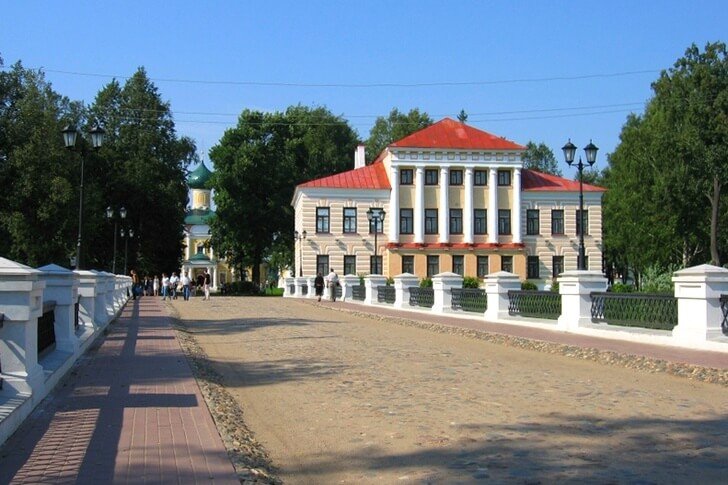
Church of Demetrius on the Blood
The picturesque temple on the banks of the Volga is one of the first buildings that tourists see on a cruise ship approaching the city. The stone building of the church was erected in 1692 on the site of the death of Tsarevich Dimitri (youngest son of Ivan the Terrible). The facade of the building is painted in a symbolic red color, diluted with a snow-white tint of window frames and blue domes.
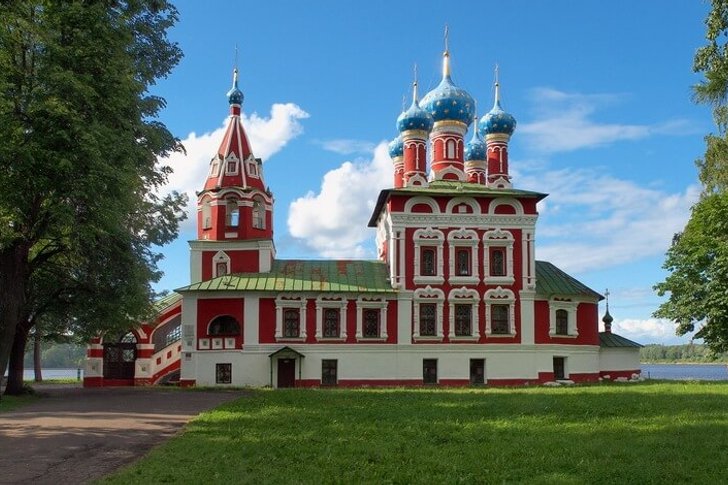
Transfiguration Cathedral
Uglich Cathedral, built in 1710 to replace a wooden building. The classicist façade of the building was redone in the 19th century. At the same time, wall paintings were created. The cathedral bell tower is located separately from the main building; it was erected in 1730. It is made in the form of an octagonal tower crowned with a spire. Similar architectural forms were widespread in the first half of the 18th century.
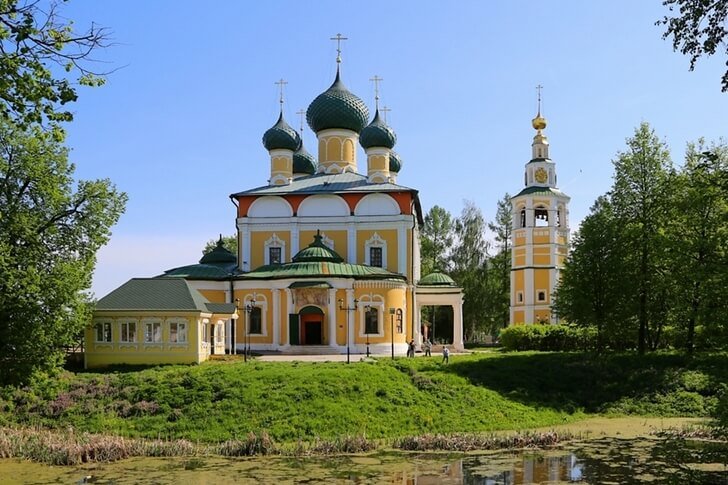
Epiphany (winter) Cathedral
In the past, the Cathedral of the Epiphany was part of a large temple, the main building of which was "cold", i.e. intended for summer worship. The stone winter church was built in 1827 to enable services to be held at any time of the year. The building has the shape of a basilica with a gable roof, which ends with a semicircular apse. The main façade is framed by a row of wide windows and pilasters. Nowadays, a museum with a collection of icons, noble and merchant portraits is located on the territory of the temple.
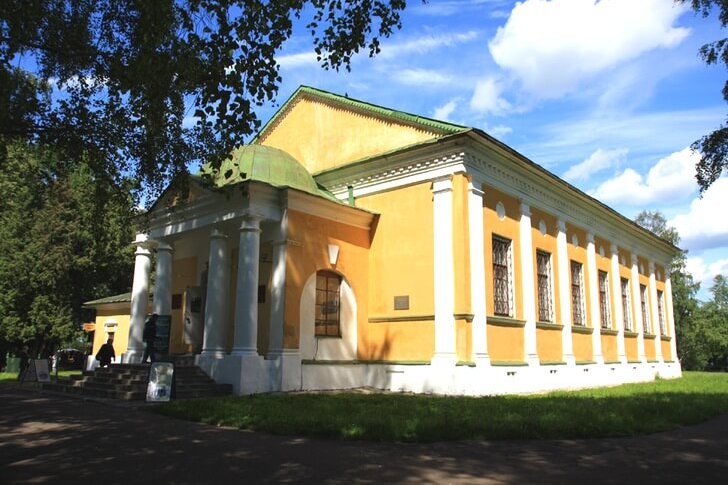
Chambers of the Uglich princes
Prince's Palace of the 15th century, built under Prince Andrei Vasilyevich Bolshoi. The complex is one of the oldest structures of civil architecture in Russia. The chambers have three tiers, the first floor has almost completely sunk underground over the centuries. As a result of numerous reconstructions, only the throne chamber remained from the historical building, the rest of the parts were built in the 18th-19th centuries.

Museum of the History of Uglich
The exposition is located in a merchant's mansion. It was created by the Uglich family of the Kulagins, whose members were seriously interested in local history and collected several hundred historical exhibits. The museum is small and consists of two departments. Visitors can see clothes, weapons, household items, panoramas of the city and models of historical buildings.
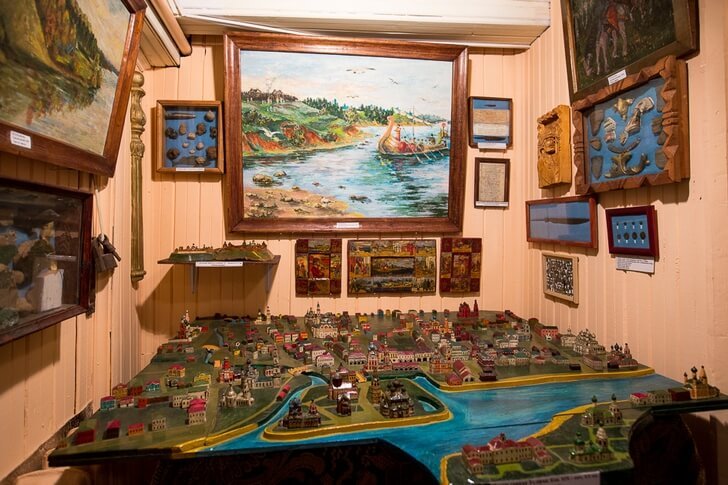
Museum of urban life
An interesting and colorful collection is located in a wooden city estate. It is dedicated to the traditions, life and customs of the townspeople that were in use in the 19th-20th centuries. Part of the exposition is a reconstruction of a dwelling that belonged to a wealthy merchant or tradesman, with all the relevant attributes - furniture, utensils, clothing. As part of the excursion program, guests are offered a traditional Russian tea party and a theatrical performance.
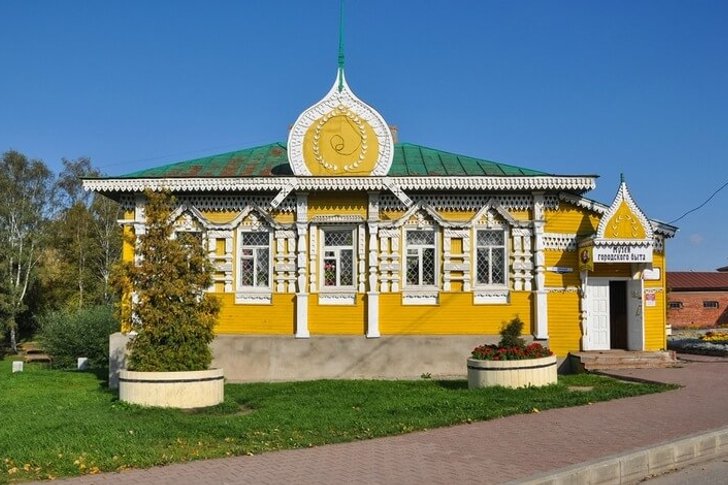
Museum of the History of Hydropower in Russia
The exposition is dedicated to everything related to the hydropower sector: dams, dams, the construction of hydroelectric power stations, as well as the history and prospects for the development of the industry. The institution opened in 2007, four years later it entered the list of the best regional museums in Russia. The collection occupies 11 halls located on three floors. Thanks to the many interactive exhibits, the exhibition looks alive and educational.
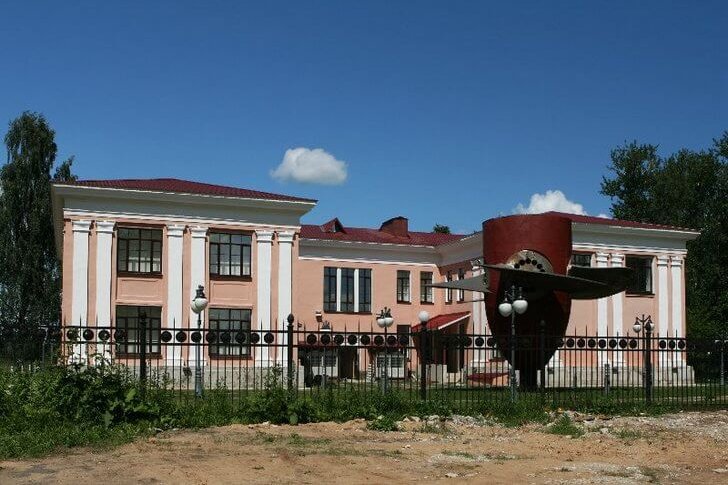
Museum of Prison Art
The institution was founded by a private individual in 2004. The exposition, located in two small rooms, is a collection of objects created by prisoners. It is known that people serving time make the most bizarre things from improvised materials to pass the time. Paper, sheets, bread crumb, wood are used. In the Uglich museum you can see all these curiosities.

Museum-Gallery of Dolls by Olga Pavlycheva
A private collection of dolls created by the craftswoman and artist Olga Pavlycheva. Literally from childhood, she led a circle where young artisans made toys from various materials. It was these children who later became the prototypes for museum exhibits. Almost all dolls are made of papier-mâché, each figurine is individual and presented in a special way.

Museum of Myths and Superstitions of the Russian People
An unusual and even mystical exposition is located inside a two-story wooden house. It is a collection of works by one family of craftsmen - everything that can be seen in the museum was created by the hands of the Aliens spouses. In the exhibition halls, visitors will be greeted by creepy characters: ghouls, ghouls, sorceresses, witches, goblin, brownies and other evil spirits.
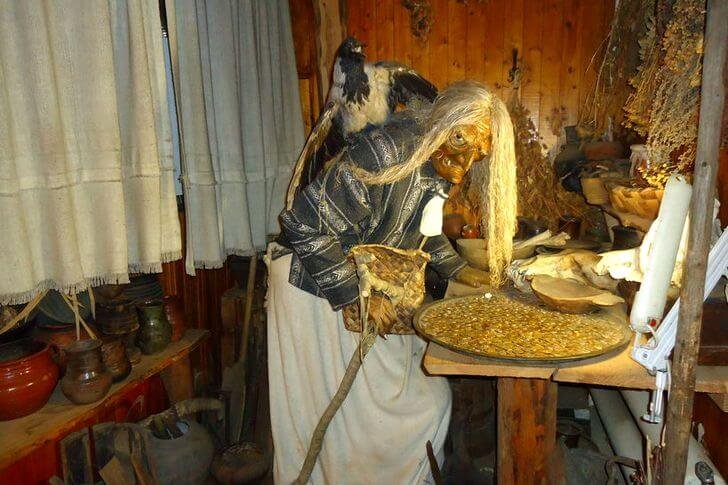
Museum of the History of Russian Vodka
The museum opened in 1998. It became the first exhibition institution dedicated to the traditional liquor. The exposition appeared in Uglich not by chance - the city is the birthplace of the vodka king and the inventor of the bitter P. A. Smirnov. The collection includes moonshine stills, filling machines, old vessels, labels. The central place is occupied by a collection of several hundred varieties of vodka made at enterprises throughout Russia.

House Museum "Legends of Uglich"
The institution is located in a house that belonged to the industrialist A.K. Posnov, who made a fortune in the production of sausages and deli meats. Located in two rooms, the exposition tells about the real and fictional history of Uglich, as well as about its famous residents. Here you can see a properly working telephone from 1900, an old piano, a gramophone and other interesting exhibits.
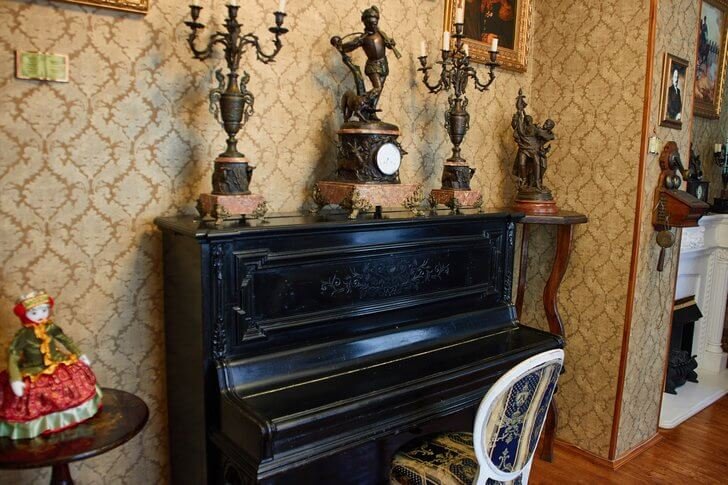
Clock Museum "Seagull"
The Uglich plant "Chaika" is the manufacturer of the famous Soviet watch brand, which stopped production in 2006. In the museum you can get acquainted with the history of the enterprise and see more than 3 thousand copies of chronometers produced at different times. The institution was established in 1975 in the building of the factory entrance. After a long break, the museum reopened its doors in 2012.

Arsenal of unusual bicycles "Samokat"
The museum opened in early 2017. Thus, it is the youngest exposition of Uglich. The collection is entirely devoted to bicycles - here are old models of the 19th century, and devices made of wood, and modern devices. The museum operates a bike rental where you can rent a Soviet Ural or Orlyonok, as well as a regular bike to ride around Uglich.

Fire Tower
The building was erected in the 1830s. It is a two-story mansion with a mezzanine, decorated with a classic portico, and a fire tower itself. The building still houses the city fire brigade. In the 19th century, the city administration was also located on the territory of the building, and a little later - the county and parish school.

Church of the Nativity of John the Baptist
Temple of the 17th century, built at the expense of the merchant N. G. Chepolosov. The merchant wished to build a church in memory of his young son Ivan, who was killed by the envious clerk Rudakov. In the 1960s, during the restoration, a boy's grave was found inside the temple. The artistic value of the building is so indisputable that even in Stalin's time, for the sake of its preservation, the design of the Uglich hydroelectric power station was changed.

Kazan church
The temple is located on Uspenskaya Square. Previously, there were two churches in its place - a wooden one and a stone one, destroyed during fires. The church building that has survived to this day was erected in the second half of the 18th century, however, it also burned twice, after which it was subjected to serious reconstructions. In the fire of 1921, the most valuable relic was lost - the icon of the Kazan Mother of God. After desolation in the 20th century, the temple was revived again and today it is the decoration of Uglich.
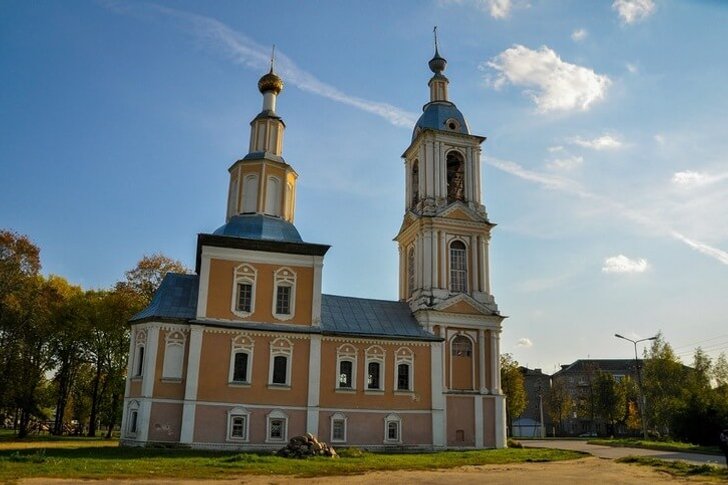
Church of Tsarevich Demetrius "on the field"
One of the most picturesque temples of Uglich, the construction of which is associated with a legend. After the murder of the young Tsarevich Dmitry, it was decided to send his body to Moscow. During the farewell divine liturgy in the open air on the outskirts of the city, a stream of blood spilled from the coffin. Drops with particles of earth were carefully collected and placed in a shrine, and on this site they decided to build a church. The surviving church building of the 18th century is the successor of that first church.
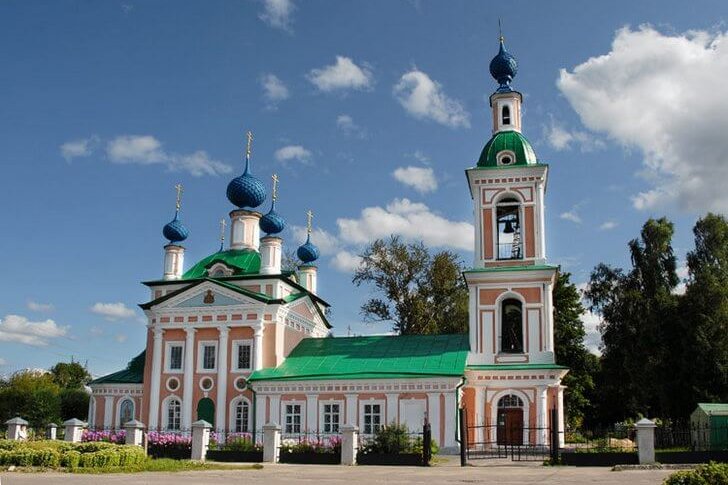
Korsun Church
The church is located on the road leading from Yaroslavl. Since the 13th century, there was a monastery on this site, which was destroyed by the Poles during the Time of Troubles. When in the 18th century a new church began to be erected on the site of the burnt buildings, they found a miraculously surviving icon of the Korsun Mother of God, in whose honor the throne was consecrated. The building was built in the Naryshkin baroque style with elements of Russian architecture.
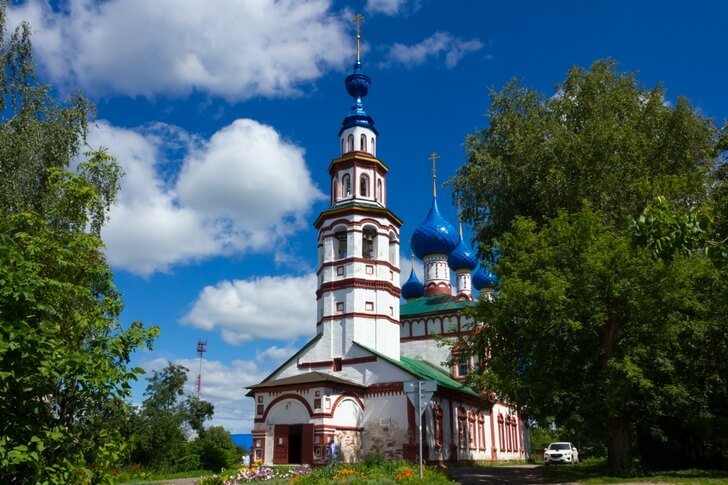
Resurrection Monastery
The exact date of the founding of the monastery is unknown - most experts agree that the monastic community was formed before the 15th century. The surviving complex of buildings, consisting of the Resurrection Cathedral, the bell tower, the refectory and the Hodegetria Church, was erected in the 1670s. In the 18th century, the monastery was abolished, and its temples served as parish churches. A major restoration of the ensemble took place in 1975.
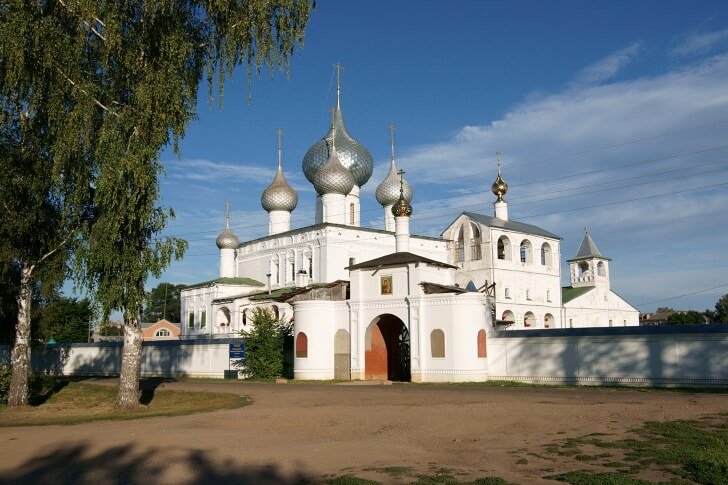
Epiphany Monastery
Women's monastery, first mentioned in the sources of the XIV century. It was founded by Evdokia, the wife of Prince Dmitry Donskoy. Initially, all the buildings of the complex were wooden, in the XVII-XVIII centuries they were replaced by stone ones. Most of the buildings, including the sister buildings, appeared in the 19th century during the period of the monastery's heyday. Monastic life revived in the 2000s after a 70-year hiatus.
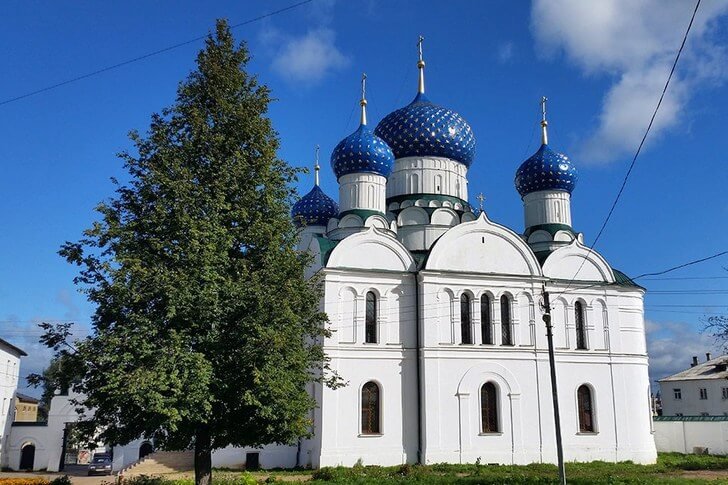
Alekseevsky monastery
The Alekseevsky monastery was founded at the end of the 14th century by the monk Adrian with the blessing of Metropolitan Alexy, but during the Time of Troubles it was almost completely destroyed. After the expulsion of the Polish-Lithuanian invaders, the restoration of the Assumption Church (nicknamed "Divna" for its picturesque appearance) began. Gradually the whole monastery was revived.
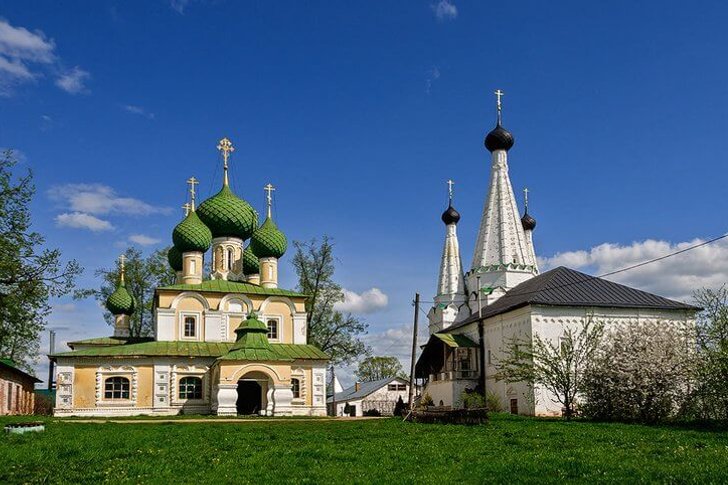
Uglich HPP
The hydroelectric power station was launched in 1940. It was the first facility of its kind in the Soviet Union, providing power to Moscow in the future. At the moment the object is active. The complex of buildings, consisting of a station building, a shipping lock and two dams, is recognized as an architectural heritage, so it is under state protection.

Shipping lock of the Uglich HPP
The structure is part of the Uglich hydroelectric power station, it is adjacent to the left bank of the Volga (to the earthen dam). The lock is 10 meters wide, fills with water to the desired level in about 10 minutes, and empties in 7. It consists of enclosing dams, a chamber, a quay wall and a navigation channel 1.2 km long. Cruise ships and industrial ships constantly pass through the lock.
